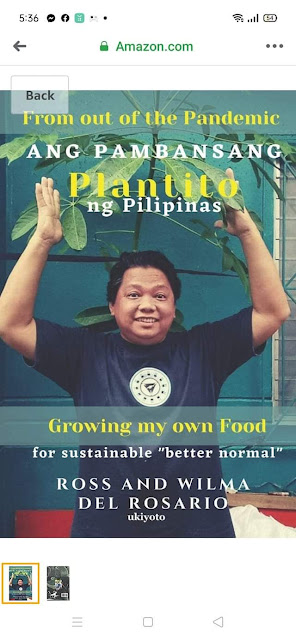Wazzup Pilipinas!?
There are moments in life when good intentions can be twisted into something unrecognizable, leaving a person shaken and questioning the very principles they live by. What happened to me at Gateway Mall Araneta was one such moment—an incident that escalated into an ordeal I never expected.
The Incident Unfolds
On the morning of the press conference I was set to attend in UP Diliman, I was waiting at the Starbucks Araneta Coliseum branch. Our media shuttle was scheduled to pick us up at 9 AM, with the same service set to return us to Gateway Mall after the event.
As I waited, I noticed a mobile phone left unattended. Concerned, I looked around for anybody who might be returning to the seat where it was left charging on a wall outlet, after a few minutes, I picked it up and checked if there was any identifying marks, and then believing it was best to surrender it to Araneta's management or security. However, knowing that the mall wouldn't open until 11 AM, I decided to hold onto it until after the press conference, when I could properly turn it over to the appropriate authorities.
While waiting outside for the shuttle, I moved to a shaded area since that outside part of Starbucks was facing the sun. Looked around the area where I can wait comfortably and found a spot in front of Cafe Adriatico where there were vacant seats. At that moment, the a guard approached me, I later found out he was the Starbucks guard, stating that the phone’s owner had been found and was waiting at the security office. Relieved, I asked if he could return it himself, as my shuttle was on its way. He refused, insisting it would only take a moment. Trusting his word, I agreed.
A Sudden Change in Narrative
The moment I arrived at the security office located at the basement, the atmosphere shifted. The Starbucks guard suddenly claimed the phone was his and presented a completely different story to the Gateway Mall security guard inside the basement security office. I stood in disbelief as he falsely asserted that he had chased me down, despite me having been stationary the entire time when he approached me.
The mall guard dismissed my explanation, treating me with hostility even after I introduced myself and clarified the situation. When they refused to listen, I requested management's intervention. However, just as I initially suspected, they told me the security head wouldn’t be available until 11 AM. I offered to wait—but instead of allowing me to do so, they escalated their threats, insisting on taking me immediately to the police station.
At that moment, the contact from the media shuttle called, looking for me at the meeting area. I informed them that I was being detained in the basement security office and asked if they could come down to explain. Even then, the guard remained unconvinced, refusing to acknowledge any possibility that I had acted in good faith.
Lessons and Regrets
Looking back, I regret not simply surrendering the phone to the Starbucks crew. My hesitation stemmed from past experiences where lost items were not properly returned to their rightful owners. I believed that handing it over to mall management, where proper documentation could be made, was the most responsible course of action. Since we would be returning to the same location after the press conference, it seemed logical to wait until then.
Unfortunately, my judgment call led to an encounter with deceit and aggression. The Starbucks guard outright lied, and the Gateway Mall security guard went so far as to use physical force while frisking me, seizing my bag in a way that made me fear he might plant something in it. I was lured into that basement under false pretenses—trapped in a situation I never could have anticipated.
Moving Forward
I know some people might say it was my mistake to take matters into my own hands instead of immediately surrendering the phone. But was it really wrong to want to ensure its safe return? Was it foolish to think that both acts—attending the press conference and personally ensuring the phone reached its rightful owner—could coexist in one productive day?
The truth is, no security personnel has the right to hurt someone they are questioning. Investigations should begin with open dialogue, listening to explanations, and giving people the benefit of the doubt—especially when good intentions are evident.
I shudder to think of what could have happened to someone else, someone without the platform I have, who might have been lured into that basement with no one to vouch for them.
Final Thoughts
For those who have been reaching out, I truly appreciate your concern. I have been advised to stop explaining, as it seems I am becoming too defensive. But for me, writing is not just about defending myself—it is an outlet, a means of processing what happened and analyzing where things went wrong.
I am taking the weekend to rest and reflect. To those who can connect me to the right people to ensure accountability, your help would mean the world. Rest assured, I am working through this, and I will not let this experience be in vain.
Thank you to everyone who has shown support. I will be back on Monday, stronger and wiser.






















.jpg)

























 Ross is known as the Pambansang Blogger ng Pilipinas - An Information and Communication Technology (ICT) Professional by profession and a Social Media Evangelist by heart.
Ross is known as the Pambansang Blogger ng Pilipinas - An Information and Communication Technology (ICT) Professional by profession and a Social Media Evangelist by heart.






.jpg)




